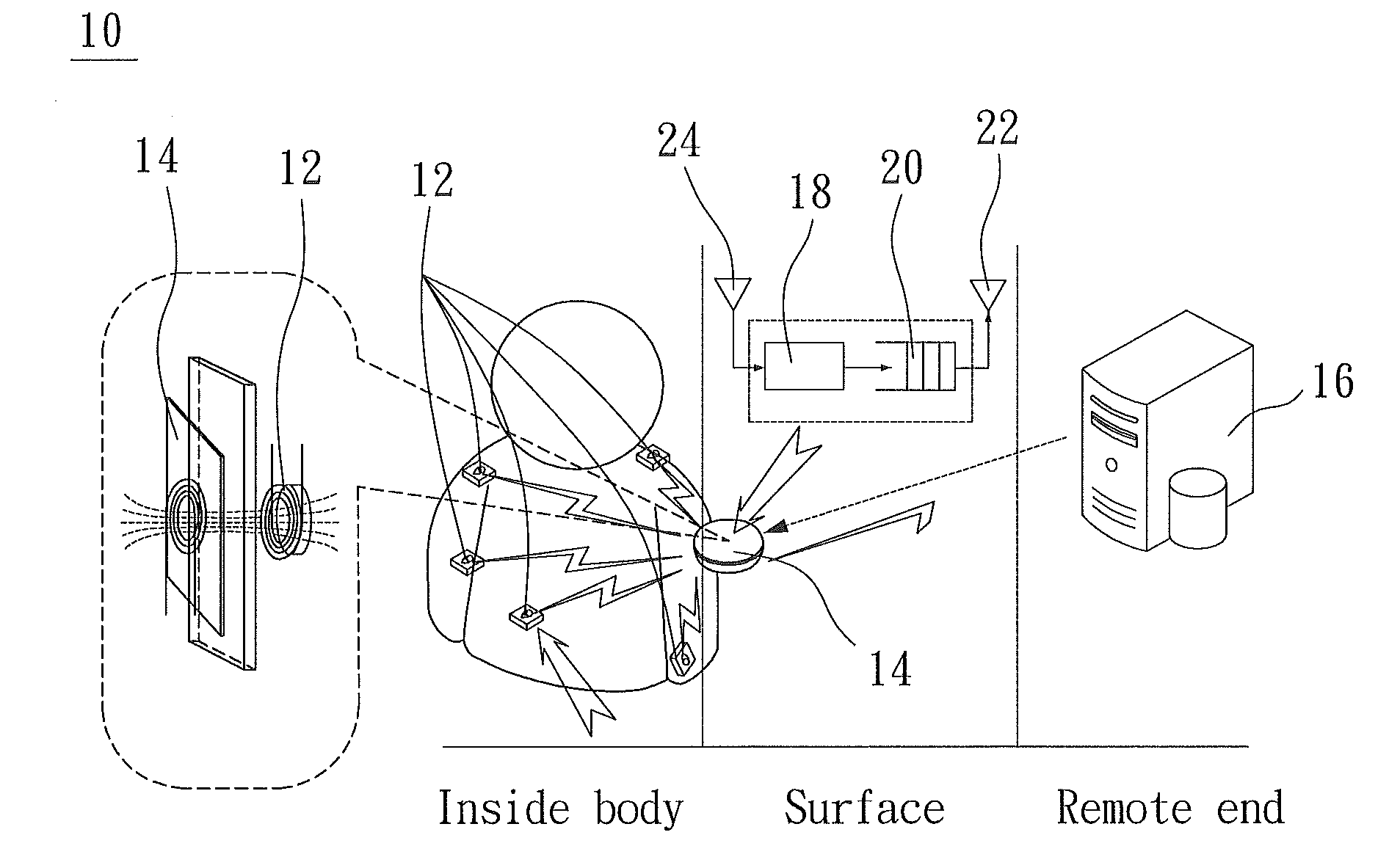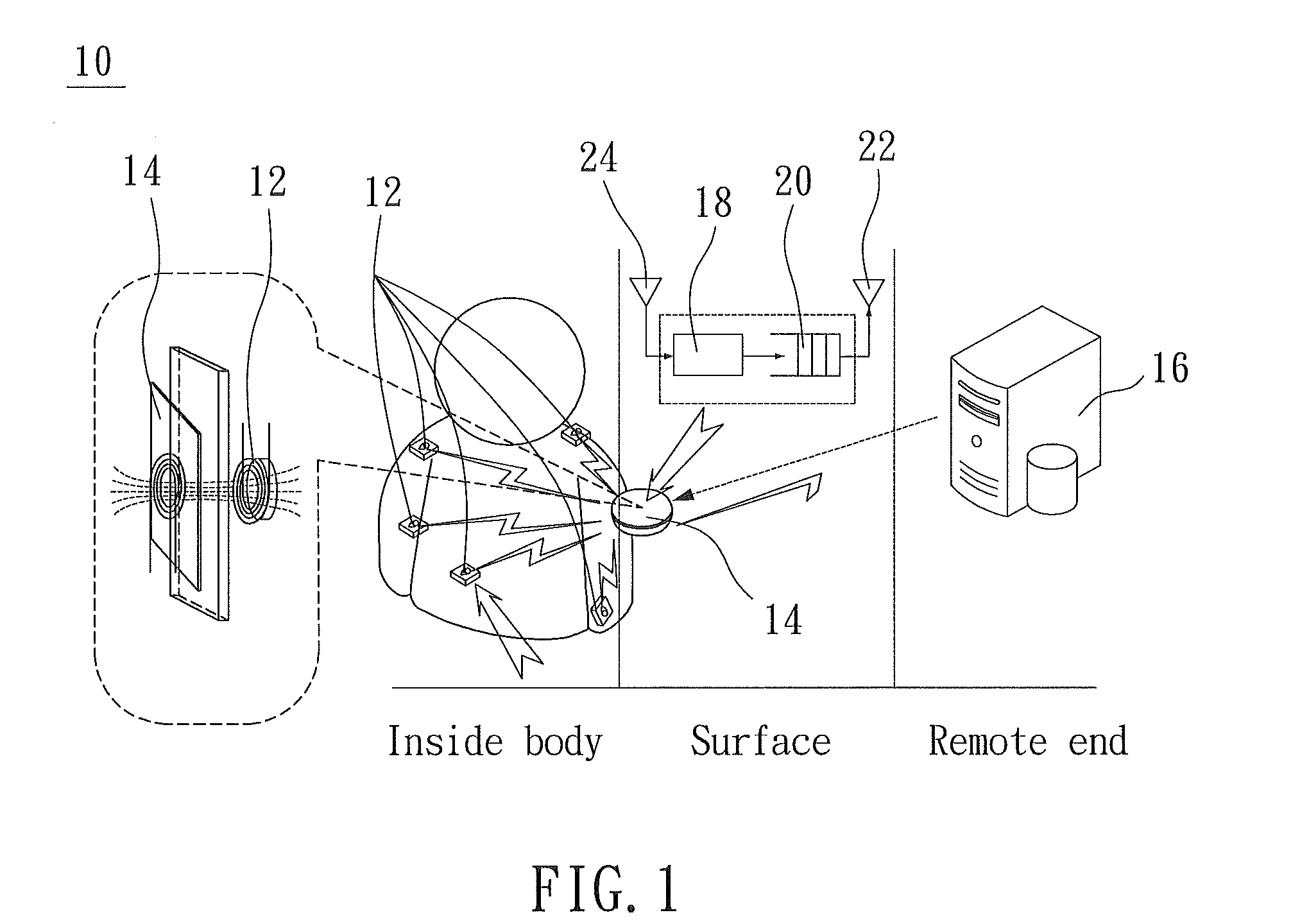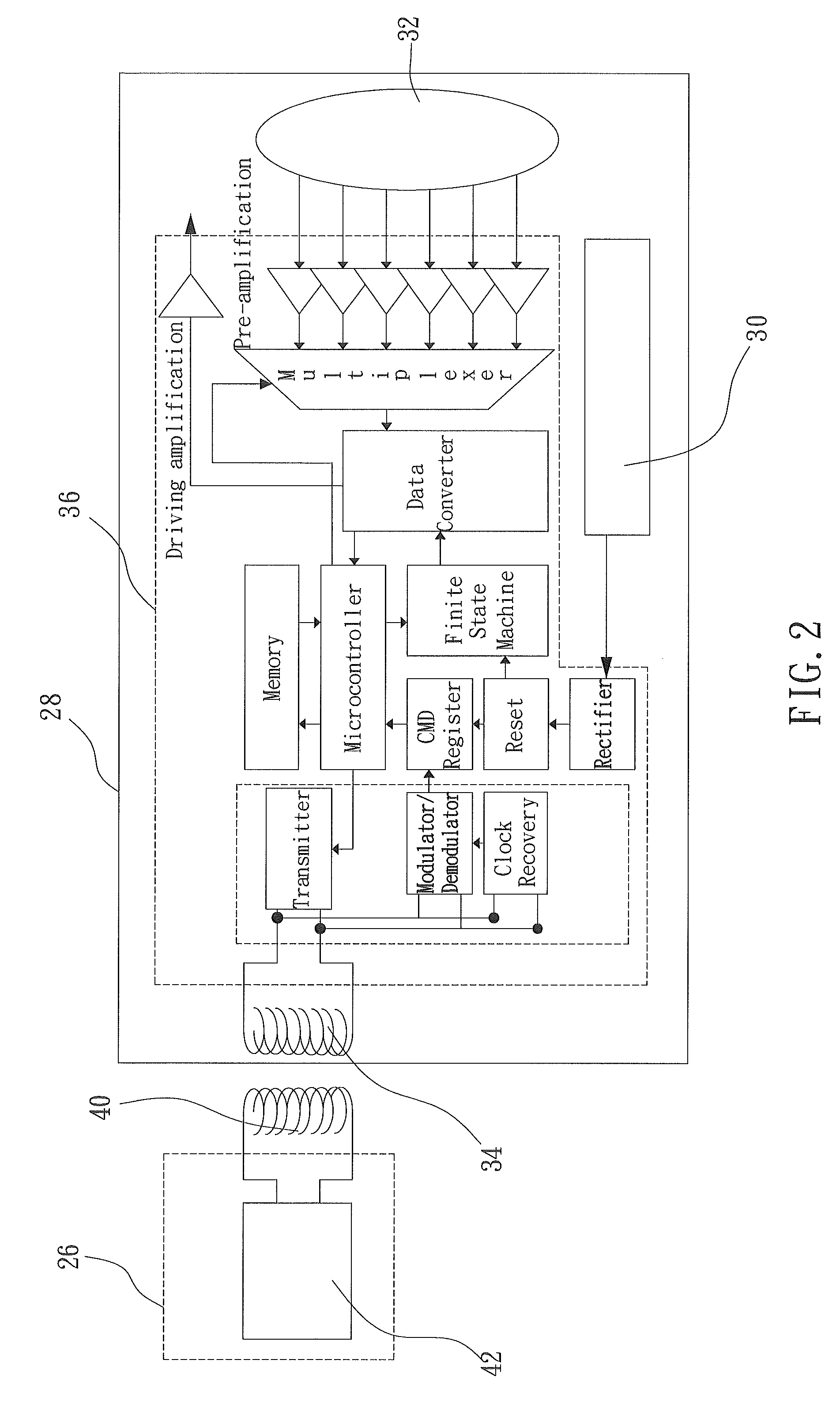Wireless monitoring bio-diagnosis system
- Summary
- Abstract
- Description
- Claims
- Application Information
AI Technical Summary
Benefits of technology
Problems solved by technology
Method used
Image
Examples
Embodiment Construction
[0017]Other features and advantages of the present invention will become apparent in the following detailed description of the preferred embodiments with reference to the accompanying drawings.
[0018]With reference to FIG. 1 for a wireless monitoring bio-diagnosis system of the present invention, the wireless monitoring bio-diagnosis system 10 comprises one or more implantable biosensor system chips 12, a surface transmitter 14 and an external monitor center 16, wherein the implantable biosensor system chip 12 is connected to the surface transmitter 14 via a wireless network and further connected to an external monitor center via the Internet. The surface transmitter 14 can be worn securely on a surface of the examinee's body or a handheld surface transmitter 14 of an implantable biosensor system chip 12 is placed near the examinee's body when it is necessary to obtain data of physiological signals. In FIG. 1, the examinee's body includes a plurality of implantable biosensor system c...
PUM
 Login to View More
Login to View More Abstract
Description
Claims
Application Information
 Login to View More
Login to View More - R&D
- Intellectual Property
- Life Sciences
- Materials
- Tech Scout
- Unparalleled Data Quality
- Higher Quality Content
- 60% Fewer Hallucinations
Browse by: Latest US Patents, China's latest patents, Technical Efficacy Thesaurus, Application Domain, Technology Topic, Popular Technical Reports.
© 2025 PatSnap. All rights reserved.Legal|Privacy policy|Modern Slavery Act Transparency Statement|Sitemap|About US| Contact US: help@patsnap.com



